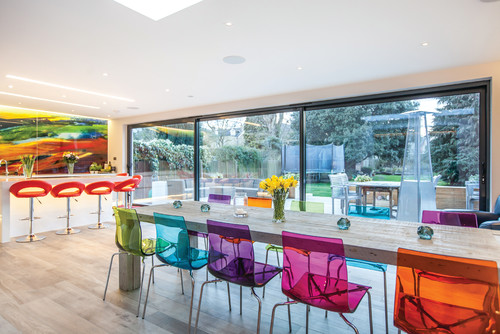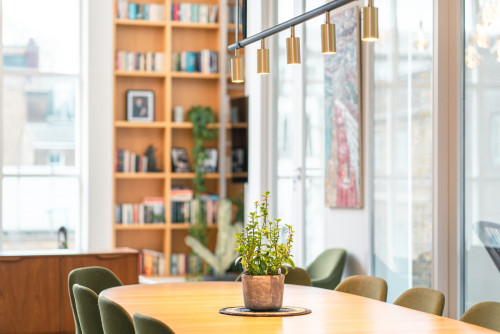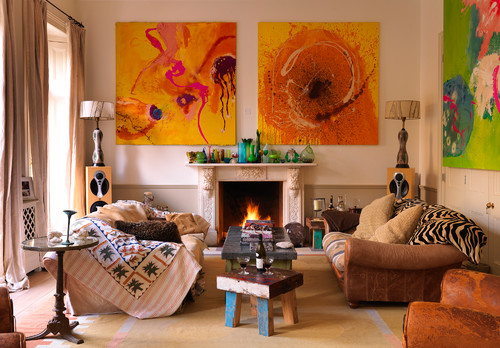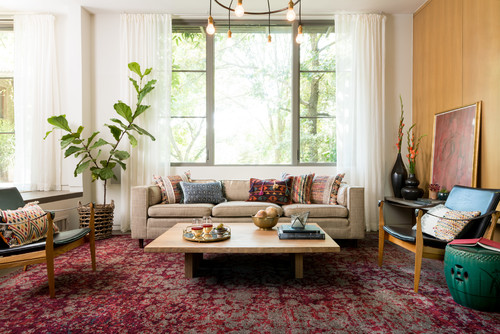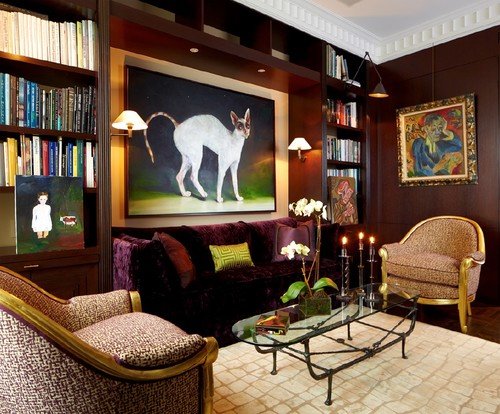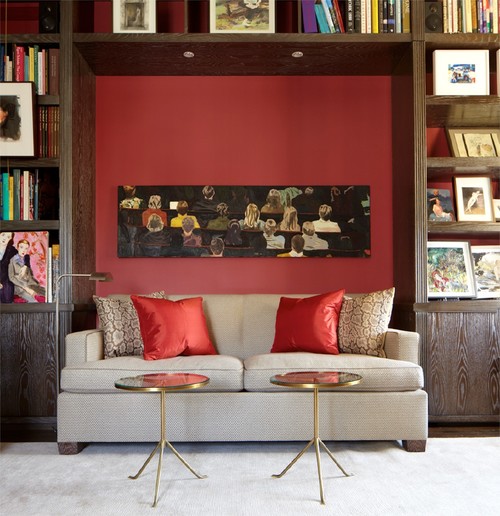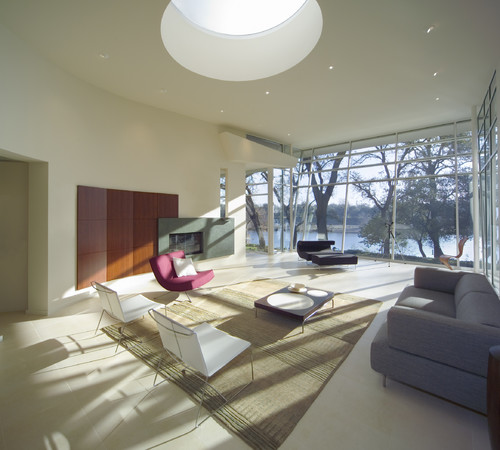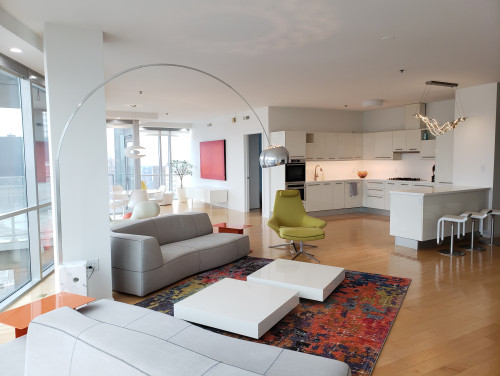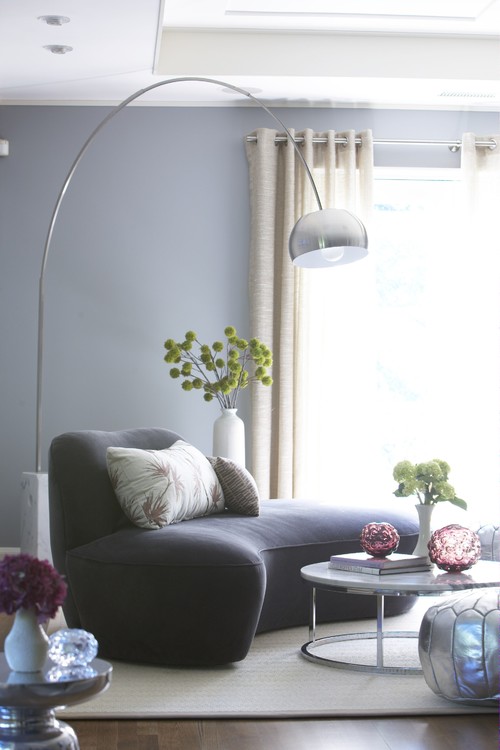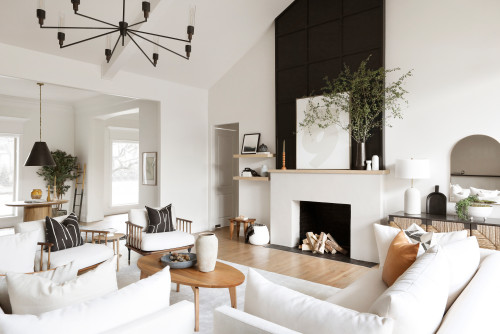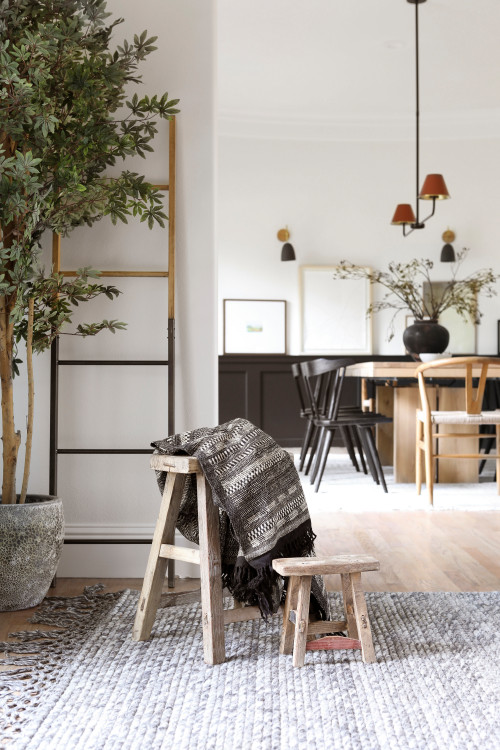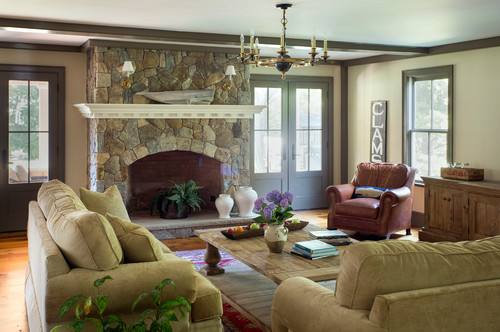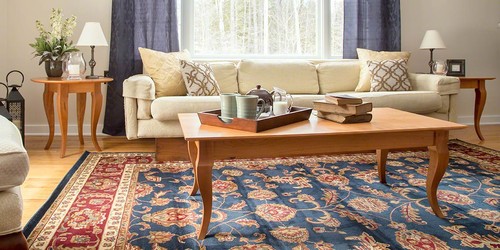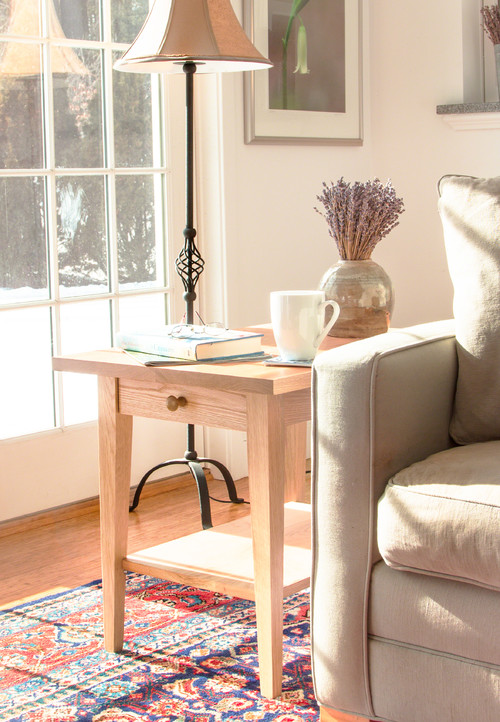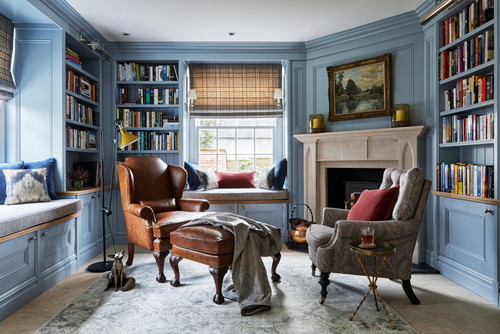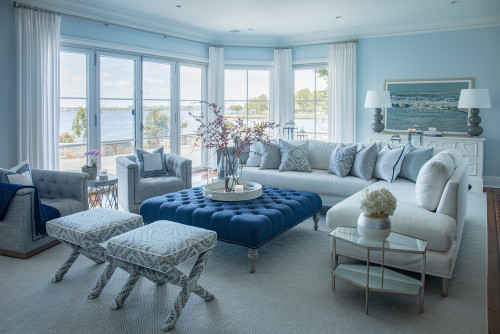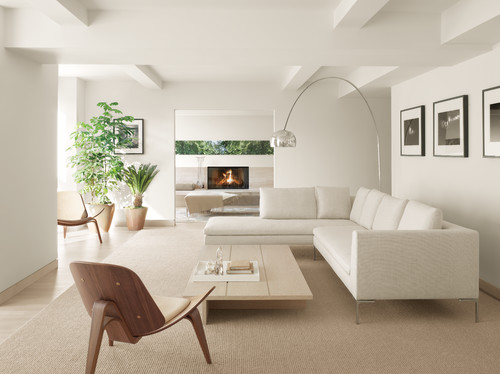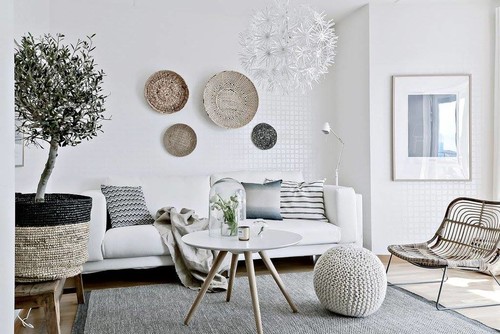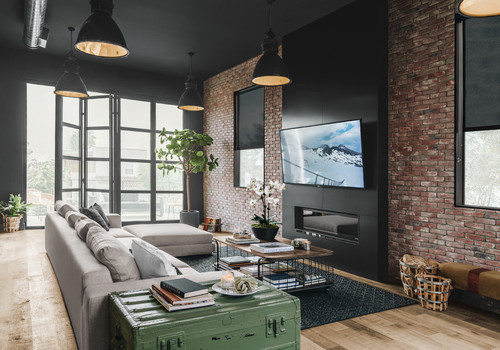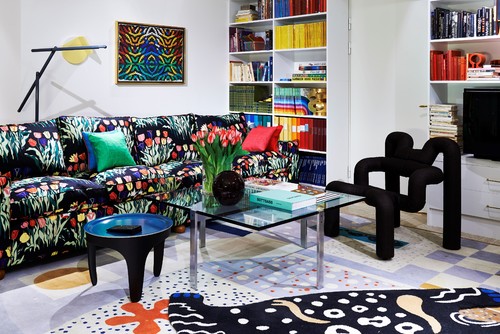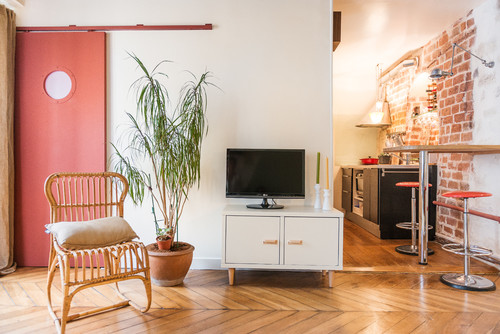Modern and Contemporary Design Styles: A Comprehensive Guide
Discover Your Design Style
Interior design styles are constantly evolving, making it challenging to keep up with what’s in vogue and what’s outdated.
In this article, we’ll explore some of the most famous interior design styles so you can identify the ones you prefer, along with tips on how to blend different styles.
1.Contemporary Style
Contemporary style is difficult to define due to its dynamic nature, as it revolves around what is current and trendy. It is often confused with modern style, but modern design refers to advancements from previous decades, such as mid-century modern or modern farmhouse styles.
In recent years, clean and simple lines have dominated contemporary design, but this has gradually shifted to the use of curved lines and arched shapes in many contemporary homes today, featuring rounded furniture and nature-inspired colors.
2.Bohemian Style
Bohemian style focuses on celebrating culture and travel, where you can gather items collected from your travels into one space. This style is so open that almost anything can fit with it.
Historically, bohemian leaned towards a hippie vibe, but its current version has become more modern.
In the last three years, bohemian has featured a light, white aesthetic mixed with natural and organic elements. Recently, it has taken a deeper approach with darker walls.
There’s no specific color palette for bohemian style; some spaces use neutral colors with luxurious textures like bamboo, jute, cotton, and ceramics, while others use bold colors with indoor plants, worn furniture, floor cushions, hanging decorations, mixed chairs, and unique chandeliers.
3.Art Deco Style
Art Deco dominated for decades after World War I, influenced by industrialization and technological advancements. It is known for its luxury and intricate details, with bright colors and geometric shapes as key elements. The furniture and decor in this style feature symmetrical, clean, straight lines, often made from unconventional materials like chrome, stainless steel, and painted wood. The dominant colors include bright yellow, red, green, blue, as well as softer hues like cream and beige.
4.Modern Style
Emerging in the early 20th century as part of a broader movement toward renewal and innovation in arts and design, modern style was a reaction to the ornate and complex Victorian style of the 19th century.
German architect Walter Gropius, one of the main pioneers of this style, founded the Bauhaus school in 1919, which became a center for teaching modern arts and design.
Modern design is characterized by simple designs, clean lines, and neutral colors with bold accents. It focuses on both functionality and beauty, using industrial materials like glass, metal, and concrete extensively. Interiors feature geometrically simple furniture, open spaces, and natural lighting. Key colors include white, gray, and black, with vibrant accents to add energy.
5.Mid-Century Modern Style
Spanning from the mid-1940s to the 1970s, this style is still popular today and blends easily with various other design styles. It is known for clean lines, geometric and flowing shapes, and a calm color palette with bold pops of color. Iconic pieces from this era, like the “Eames Lounge Chair,” the “Arco Floor Lamp,” and the “Noguchi Coffee Table,” make it easily recognizable.
6.Organic Modern Style
Organic modern is a relatively new design that focuses on neutral color palettes and creates interest through layering textures. This style often features light colors like white, cream, beige, and light gray. However, a bolder approach can be taken with bright natural colors like green, using cream shades to balance it out. As the name suggests, furniture and decor in this style can be wild and sculptural, depending on how daring you want to be.
7.Modern Farmhouse Style
Best suited for homes with an architectural design resembling farmhouses, think exposed wood and black-framed windows. This style honors simple living by creating a cozy home atmosphere while adding a modern touch through clean lines. Materials and textures feature raw wood, incorporated not only in architectural details like wooden beams but also in chalk-painted furniture, benches, and decorated tables.
8.Rustic Style
Similar to the modern farmhouse style but without the modern twist, rustic style is centered around simple materials, handcrafted pieces, and a charming rustic appearance. Originating in 17th-century Britain, it features natural wooden furniture, farmhouse-style lighting, leather sofas, and possibly even a tea set on the dining table. The color palette mainly consists of dark earthy tones.
9.Traditional Style
Though not the most popular today, traditional style still appears in heritage homes with intricate details like moldings and trim. Its furniture and decor include dark, ornate wooden furniture made from walnut or chestnut, high-backed chairs, Baroque-inspired framed mirrors, oil paintings, and vases filled with fresh flowers. Rich colors like burgundy, brown, and green are commonly used in this style.
10.Coastal Style
This style evokes a peaceful and relaxed atmosphere, inspired by coastal landscapes and the marine environment. Coastal design reflects the simplicity and beauty of nature, creating a calm and restful environment, making it a popular choice for homes near the beach or for those looking to bring a seaside feel to their interiors.
11.Minimalist Style
Minimalism is more than just an interior design style—it’s a lifestyle. It’s about intentional design where everything in the home has a purpose. Less is more. Minimalist interiors are built on a neutral color palette, often in white and black, and are inspired by modern and Scandinavian design. These spaces are bright, organized, light, and calm, providing mental clarity by removing clutter and visual noise.
12.Scandinavian Style
Scandinavian design originates from the Nordic countries. Every design element enhances the Danish concept of “hygge,” which expresses a feeling of comfort. Scandinavian interiors are based on a white color scheme with natural textures and hues to add warmth. The style is functional and organized, relying on materials like fur, leather, and soft pastels to add depth.
13.Japandi Style
Japandi is a blend of Japanese and Scandinavian styles. It combines the Danish concept of “hygge” (which emphasizes coziness) with the Japanese philosophy of “wabi-sabi” (which appreciates the beauty of imperfection). Japandi design incorporates natural elements like stone, paper, and wood but features a darker color palette than Scandinavian style, using richer, deeper tones. It conveys a sense of harmony and balance by blending thin, straight lines with natural materials.
14.Industrial Style
Industrial design is characterized by clean lines and an unembellished look. It relies on raw materials like brick, concrete, leather, and metal. Industrial furniture commonly uses neutral colors like black, white, and gray. You’ll always find high ceilings, large windows, and open floor plans in industrial spaces. Materials blend into the decor, giving it a simple, bold, and functional appearance.
15.Eclectic Style
Eclectic style is about mixing old and new together. It involves blending various styles and eras while maintaining balance and coherence in the space. The key is finding a common thread to connect the diverse elements and achieve a harmonious eclectic look.
Interior design is not about sticking to a specific style, but about exploring and combining different styles to create a space that reflects your unique personality. Whether you lean towards the classic elegance of traditional style, the laid-back comfort of coastal design, or a minimalist approach, understanding different styles will help you make thoughtful decisions when designing your home.


